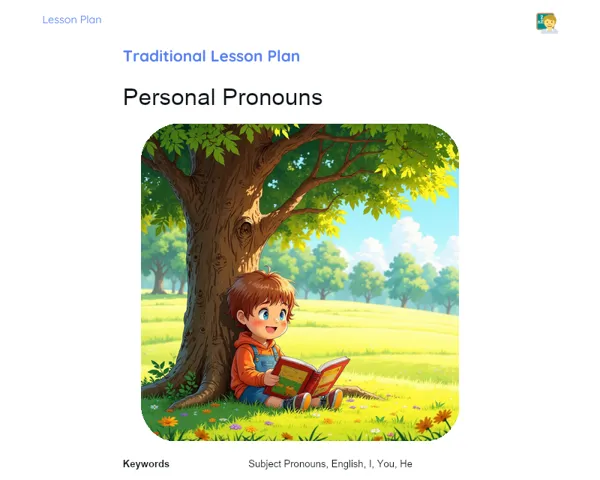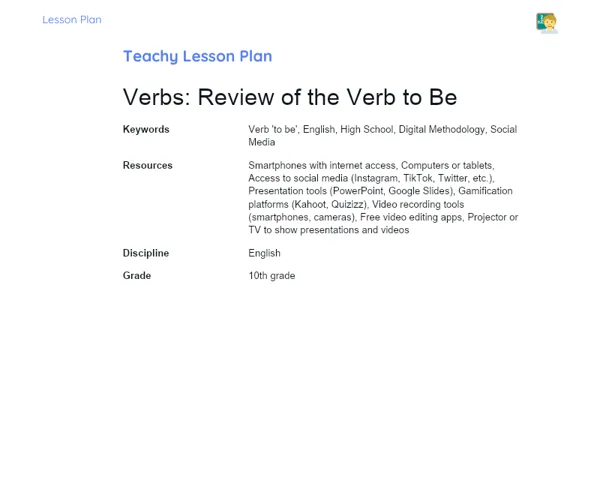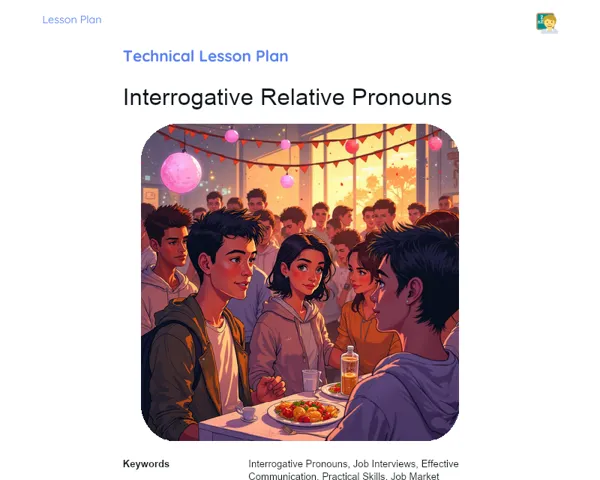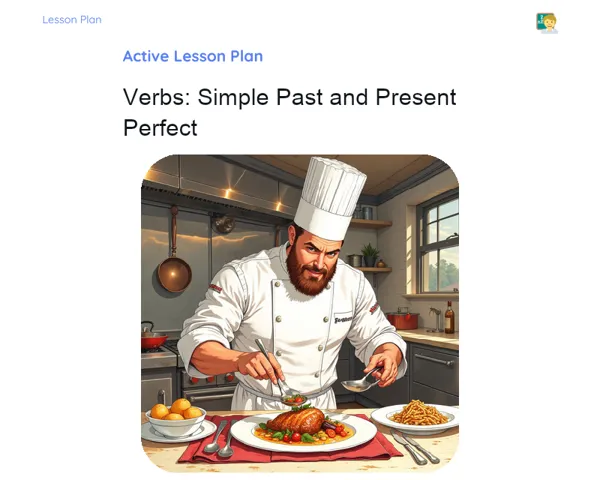Lesson Plan | Lesson Plan Tradisional | Introduction to Connectors
| Keywords | Connectors, Cohesion, Coherence, Types of Connectors, Texts in English, Identification of Connectors, Text Production, Adversative, Additive, Causal, Consecutive, Temporal |
| Resources | Whiteboard, Markers, Slide presentation, Printed activity sheets, Pens and pencils, Copies of short texts in English, English dictionaries, Multimedia projector |
Objectives
Duration: (10 - 15 minutes)
The aim of this lesson is to introduce students to connectors in English, emphasising their significance for textual cohesion and coherence. By grasping the relevance and function of connectors, learners will be better equipped to spot and utilize these elements in their own writing.
Objectives Utama:
1. Understand what connectors are and why they are crucial in the English language.
2. Identify various types of connectors in different texts.
Introduction
Duration: (10 - 15 minutes)
The aim of this section is to introduce students to the concept of connectors in English and their importance for textual cohesion and coherence. By understanding the relevance and usability of connectors, students will be better prepared to identify and use these components in their own writing.
Did you know?
Did you know that connectors are so important that they can actually change the meaning of a sentence? For instance, 'I like apples, but I prefer bananas' has a different meaning than 'I like apples and also prefer bananas'. These small words can make a significant impact on communication!
Contextualization
Begin the lesson by explaining to the students that connectors are words or phrases that help link ideas in a text, making it more cohesive and easier to understand. Use simple examples from Afrikaans or Xitsonga, like 'maar' (but), 'tog' (however), 'en' (and), 'so' (so), so they can connect to what they already know. Then, highlight the significance of connectors in English, demonstrating that they serve a similar purpose in forming clearer and more structured sentences and paragraphs.
Concepts
Duration: (40 - 50 minutes)
The goal of this portion is to deepen students' understanding of connectors, allowing them to identify and use these elements in varied contexts. By exploring the different types of connectors and their practical applications in sentences and texts, students will develop essential skills for crafting cohesive and coherent texts.
Relevant Topics
1. Definition of Connectors: Clarify that connectors are words or phrases that link sentences, clauses, or paragraphs, aiding in the creation of cohesive and coherent texts.
2. Types of Connectors: Provide details on the main types of connectors in English, such as additive (and, also), adversative (but, however), causal (because, since), consecutive (so, therefore), and temporal (when, while).
3. Usage Examples: Offer clear examples for each type of connector, utilizing sentences and short paragraphs. For example, additive connectors: 'She enjoys reading and writing.' For adversative connectors: 'He wanted to play, but it started to rain.'
4. Identification in Texts: Present short texts or excerpts and ask students to pinpoint and underline the connectors used. Engage in a discussion about how these connectors enhance the text's meaning.
To Reinforce Learning
1. Identify the connectors in the following sentences: 'She is tired, but she will continue working.' 'I want to go to the park because it is sunny.'
2. Write a sentence using an additive connector and another using an adversative connector.
3. Read the paragraph and underline all the connectors you can find: 'Although it was raining, we decided to go out. We took an umbrella, and we wore raincoats. However, we still got wet because the wind was strong.'
Feedback
Duration: (25 - 30 minutes)
This section aims to review and reinforce students' knowledge about connectors, encouraging them to contemplate the importance of these elements in constructing cohesive and coherent texts. By discussing answers and engaging with the class, the teacher fosters a deeper understanding of the topic, enhancing students' ability to identify and effectively use connectors.
Diskusi Concepts
1. For the sentence 'She is tired, but she will continue working', clarify that the connector 'but' is adversative, indicating a contrast between being tired and continuing work. Discuss how 'but' changes the sentence's meaning by contrasting two ideas. 2. Regarding the sentence 'I want to go to the park because it is sunny', clarify that the connector 'because' is causal, indicating the reason behind the desire to go to the park. Illustrate how 'because' establishes a cause-and-effect link. 3. For the writing activity, encourage students to share their sentences. An example of an additive connector could be 'She likes to read and write', while an adversative connector sentence might be 'He wanted to play, but it was raining.' Explore how connectors facilitate the linking of ideas within sentences. 4. For the paragraph 'Although it was raining, we decided to go out. We took an umbrella, and we wore raincoats. However, we still got wet because the wind was strong,' discuss each connector: 'Although' is concessive, indicating a contrary condition; 'and' is additive, connecting two actions; 'However' is adversative, providing a contrasting idea; 'because' is causal, clarifying the reason.
Engaging Students
1. Why do you think connectors are essential in forming sentences and texts? 2. How can the meaning of a sentence be altered by using different connectors? Provide examples. 3. Can you think of any connectors that we frequently use in our daily lives in your native language? How do they assist in our communication? 4. Select a connector you learned today and formulate a new sentence or paragraph using it. Share with the class. 5. Read a brief text and underline the connectors. Discuss with a partner how these connectors help convey the text's meaning.
Conclusion
Duration: (10 - 15 minutes)
The aim of this segment is to consolidate students' understanding of connectors, summarizing the key points covered in the lesson and underlining the practical importance of these elements. By wrapping up with a recap, the teacher ensures students leave with a clear and solid understanding of the content.
Summary
['Connectors are words or phrases that link sentences, clauses, or paragraphs, forming cohesive and coherent texts.', 'There are various types of connectors in English, including additive (and, also), adversative (but, however), causal (because, since), consecutive (so, therefore), and temporal (when, while).', 'Connectors aid in building the meaning of the text, facilitating communication and comprehension.', 'Identifying and using connectors accurately is crucial for creating clear and organized sentences and paragraphs.']
Connection
Throughout the lesson, students were introduced to the theory behind connectors and then applied this knowledge practically through examples and text identification activities. This blend allowed them to witness how connectors operate in real contexts, solidifying theoretical understanding with direct practice.
Theme Relevance
Connectors are foundational in our daily communication, both verbally and in writing. They enable individuals to express ideas clearly and in an organized manner, reducing the likelihood of misunderstandings. Recognising and properly using connectors can significantly elevate students' writing quality, leading to more cohesive and coherent work.



